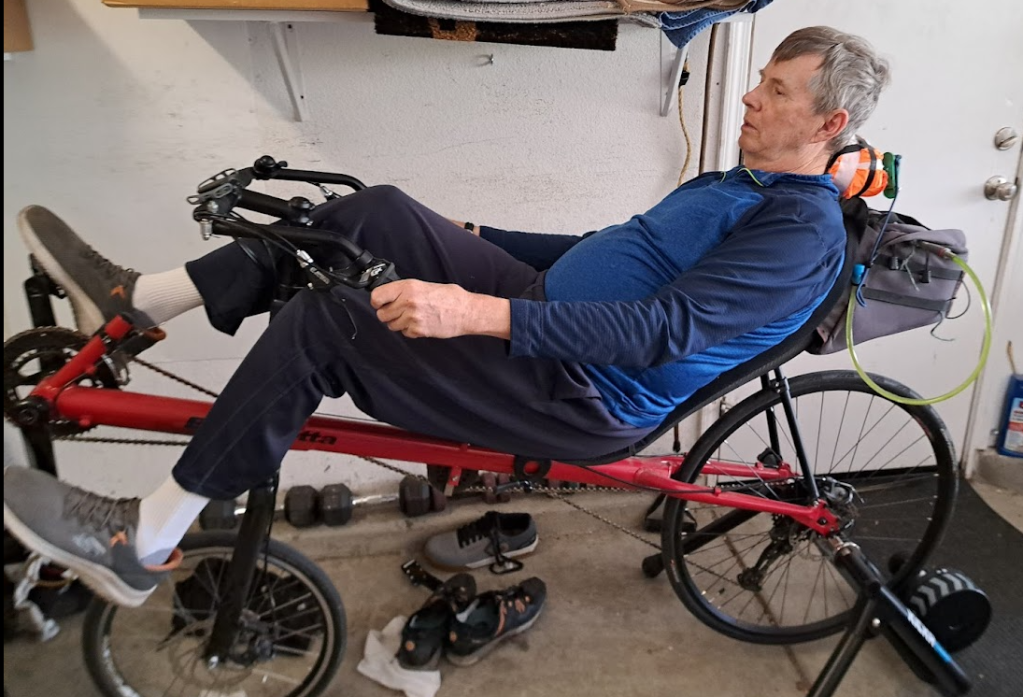On Thursday I did my upper body strength training workout then did an easy ride on my recumbent. Friday I tried out the recumbent with a 28″ rear wheel and 20″ front. I did a little better on my two local short time trials, the digital loop and the “New Morgan Hill criterium” (that’s it’s name on Strava). These are good tests because they are shorter (one is about like running a quarter mile and the other like running a half mile) and easy to get to, so I think these will be my go to speed tests in the future. Thursday’s upper body workout is posted here, the ride is here. Friday’s rides are here and here.

Multiple Sets are Better Than Single Set?
On the subject of strength training, in his “Sweat Science” column in Outside magazine, Alex Hutchinson reported on a study comparing multi-set vs. single-set training for “hardgainers” (people who have trouble putting on muscle mass, like me). It showed they got better results for multi-set training. He pointed out that this may be important for older adults that may have been inactive till now, so they’ve lost muscle mass and are trying to get it back. However, this study made the same mistake comparing single set to multi-set that many researchers do: the single-set training was done at the same intensity as the multi-set training. An advantage of single-set training over multi-set is that you can get yourself to push harder because you know there are no more sets coming. So a proper comparison is between higher intensity single-set vs. multi-set should have the single set be higher intensity. Also, there are various tricks like “breakdown training” and “slow negatives” that can be used to coax more out of a single-set [1]. So I’ll stick with single-set training, which has worked fine for me for years, but make sure I push myself pretty hard.
References
- Westcott, Wayne, and Tracy D’Arpino, High-Intensity Strength Training: The Most Effective and Efficient Means for Developing Muscle and Strength, Healthy Learning (2015).


